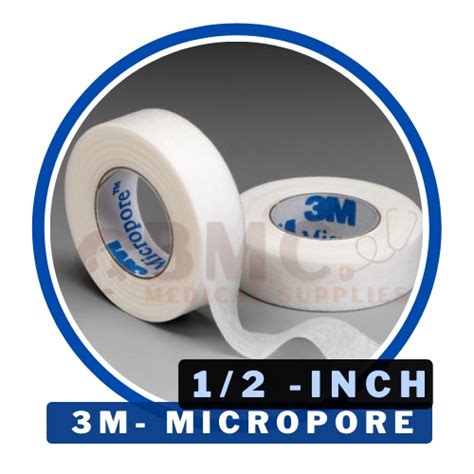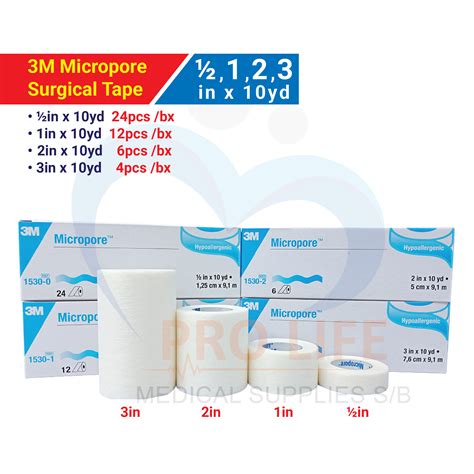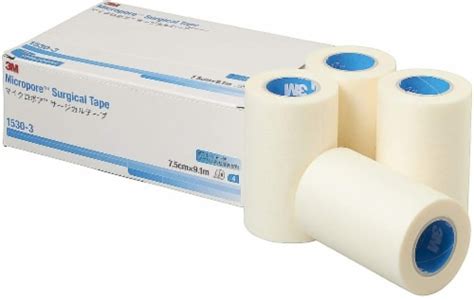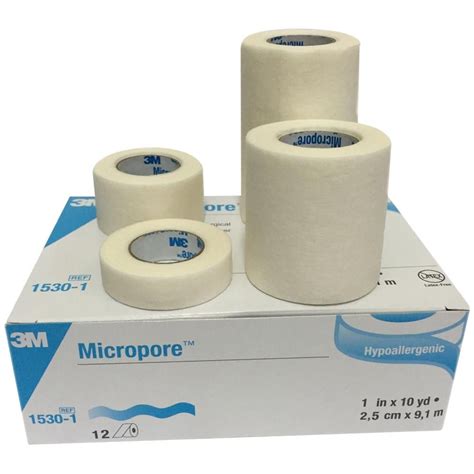Micropore tape, a type of medical tape, has been a staple in the healthcare industry for decades. Its unique properties and versatility have made it a preferred choice among medical professionals for securing dressings, tubing, and other medical devices to the skin. In this article, we will delve into the world of micropore tape, exploring its characteristics, applications, and benefits, as well as its limitations and potential alternatives.
Key Points
- Micropore tape is a breathable, hypoallergenic tape designed for sensitive skin
- It is commonly used for securing dressings, tubing, and medical devices
- Micropore tape is available in various widths and lengths to accommodate different applications
- Its adhesive properties are gentle on the skin, reducing the risk of irritation and allergic reactions
- While micropore tape is a popular choice, it may not be suitable for all skin types or applications
Characteristics and Properties of Micropore Tape

Micropore tape is a type of porous tape that allows for the exchange of air and moisture between the skin and the environment. This breathability is essential for promoting healthy skin and preventing the buildup of moisture, which can lead to skin irritation and infection. The tape’s hypoallergenic properties make it an excellent choice for sensitive skin, reducing the risk of allergic reactions and skin irritation.
The adhesive properties of micropore tape are gentle on the skin, yet strong enough to secure dressings and medical devices in place. The tape is available in various widths and lengths, making it versatile and adaptable to different applications. Its flexibility and conformability allow it to be used on a range of body parts, including joints and curved areas.
Applications of Micropore Tape
Micropore tape is commonly used in various medical settings, including hospitals, clinics, and home care. Its applications include:
- Securing dressings and bandages to the skin
- Holdings tubing and medical devices in place
- Securing IV lines and catheters
- Supporting wound care and management
In addition to its medical applications, micropore tape is also used in sports and athletic settings to secure bandages and dressings, providing support and protection to injured areas.
| Property | Value |
|---|---|
| Breathability | High |
| Hypoallergenic | Yes |
| Adhesive Strength | Moderate to High |
| Width and Length | Variable (1/2 inch to 2 inches wide, 5 yards to 10 yards long) |

Benefits and Limitations of Micropore Tape

The benefits of micropore tape are numerous, including its breathability, hypoallergenic properties, and gentle adhesive. These characteristics make it an excellent choice for patients with sensitive skin or those who are prone to skin irritation. Additionally, micropore tape is easy to apply and remove, reducing the risk of skin trauma and discomfort.
However, micropore tape may not be suitable for all applications. Its adhesive properties may not be strong enough for certain situations, such as securing heavy dressings or devices. Additionally, the tape’s breathability can be a limitation in certain situations, such as when a waterproof barrier is required.
Alternatives to Micropore Tape
While micropore tape is a popular choice, there are alternative options available. These include:
- Non-woven tapes, which offer a more aggressive adhesive and a thicker, more durable construction
- Foam tapes, which provide a more cushioned and flexible support
- Hydrocolloid tapes, which offer a waterproof barrier and a more aggressive adhesive
Each of these alternatives has its own unique characteristics and benefits, and the choice of tape will depend on the specific needs of the patient and the application.
What is micropore tape used for?
+Micropore tape is commonly used for securing dressings, tubing, and medical devices to the skin. It is also used in sports and athletic settings to secure bandages and dressings.
Is micropore tape breathable?
+Yes, micropore tape is breathable, allowing for the exchange of air and moisture between the skin and the environment.
Can micropore tape be used on sensitive skin?
+Yes, micropore tape is hypoallergenic and gentle on the skin, making it an excellent choice for sensitive skin.
In conclusion, micropore tape is a versatile and reliable medical tape that offers numerous benefits, including breathability, hypoallergenic properties, and gentle adhesive. While it may not be suitable for all applications, it is an excellent choice for many medical and athletic settings. By understanding the characteristics, applications, and limitations of micropore tape, medical professionals can make informed decisions about its use and provide optimal care for their patients.
